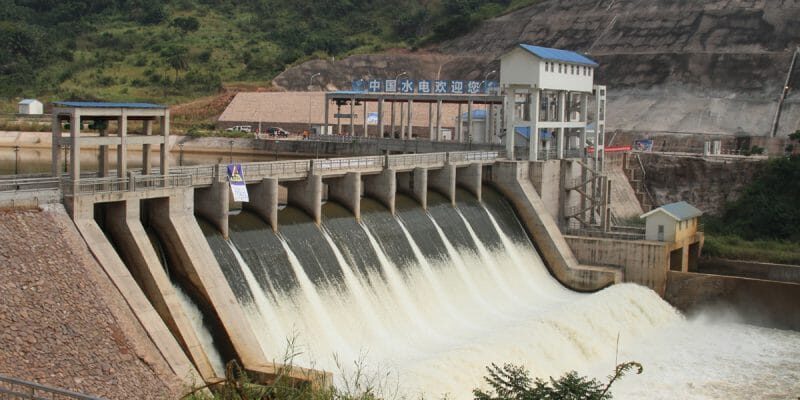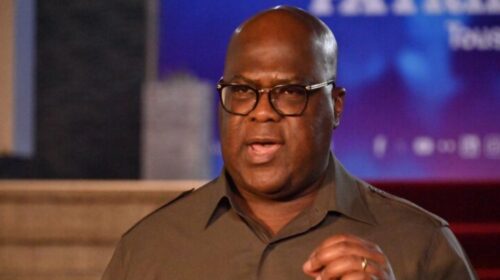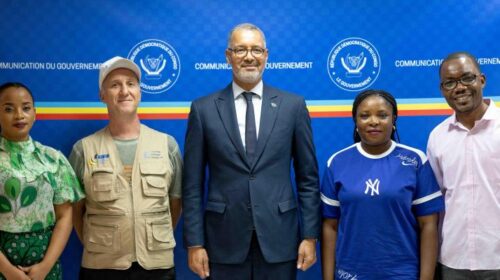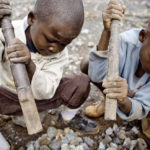Hydropower becoming increasingly viable for miners in DRC
Mining companies are increasingly considering hydropower as a power source for their mines in the Democratic Republic of Congo (DRC).
Hydropower, whether pumped storage or run-of-river, is a low-cost, clean form of energy in areas with rivers or dams.
The DRC has abundant water resources and is ideally placed to support the development of both small- and large-scale hydropower schemes.
The Grand Inga dam is a series of seven proposed hydroelectric power stations at the site of the country’s Inga Falls, which is one of the largest waterfalls in the world. If built as planned, the 40 GW project will be the largest power station in the world.
Hydropower has already successfully been used as a source of power by the mining industry. For example, the Azambi hydropower project is the third hydropower project developed by Barrick’s Kibali gold mine.
The Congo river, the African continent’s largest by volume and its most powerful, passes through ten countries before emptying into the Atlantic Ocean. At 150 km from its mouth in the DRC, the river holds its greatest hydropower potential at the site of Inga Falls.
The river currently hosts 40 hydropower projects, nine of which are in the DRC.
Hydropower makes up 2.4 GW of the DRC’s total installed power generation capacity, although almost half is not operational.
The US Agency for International Development (USAID) estimates that the country is only using 2.5% of its hydroelectric resources and has technically feasible potential of 100 GW of hydroelectric energy.
Engineering consultancy Knight Piésold dams and hydropower section manager Robert Greyling says the DRC has the world’s third-largest hydropower potential after China and Russia. However, the DRC remains among the most under-electrified countries in the world, with 19% access to energy in urban areas and 1% in rural areas.
The country has a peak power demand of about 4 GW. However, the mining sector alone will demand about 1 681 MW by 2025.
Greyling explains that, amid complex and diverse sector needs, electricity access stands out as an important government priority. The country in 2014 promulgated an Electricity Act, to enable the power sector to be an engine of economic growth. This legislation removed the State-owned utility in the country’s monopoly status and provided a new regulatory framework to promote public-private partnerships.
The DRC also created an electricity regulatory agency to promote rural and peri-urban electrification.
The current major role-players in the DRC energy sector are the Ministry of Energy and Water Resources, the utility Société Nationale d’Electricité (SNEL), medium-scale private operators and mining companies that supply neighbouring households as part of their corporate social responsibility.
Greyling notes that challenges to the existing power network include managing the growing power deficit, strengthening the interconnecting network, the transmission line network and reducing load-shedding, as well as the continued involvement of SNEL as a major stakeholder in energy access.
He remarks that the country does lack commercial financing and risk mitigation instruments.
Specifically, access to finance is an issue in the country’s energy sector and the country’s implementation of emergency plans for rehabilitation of existing, and construction of, new power plants.
In terms of funding and financing options, the country has no stock market or debt capital market, while the financial system is structured on small banks.
However, there is a strong development community presence, with the African Development Bank (AfDB) having strengthened the transmission network supplying Kinsasha and helped develop the Lungundi II hydropower plant to add supply in Tshikapa.
Greyling states that the World Bank has also been a major development partner in the DRC’s power sector, having provided more than $1-billion in financing for project development.
OPPORTUNITIES
With government wanting to electrify new provincial capital cities in the short term and envisioning achieving universal electricity access in the long term, it provides opportunities for the private sector to play a greater role in the energy sector.
Hydropower in Africa plays a significant transformational role; it promotes renewable, cost effective and reliable power; promotes industrial development and urbanisation; helps reduce the rates of deforestation; encourages other industries such as training and education; and projects built decades ago have left legacy assets.
Mines have developed hydropower capacity where concessions lie in remote areas and are reliant on thermal power, which is fuelled by expensive diesel, all while large untapped rivers flow nearby.
For miners, the baseline power and development cost must offset diesel expenditure over the life-of-mine, which hydropower can effectively do.
Once built, Greyling notes, hydro schemes make it easier to add other renewable energy sources.
Hydropower can benefit a mine by providing cost effective and reliable power, the ability to afford mining of lower-grade ore and, thereby, extend the mine’s life, legacy assets and assist the mine with its social licence.
“Hydropower in the DRC will continue to play a hugely transformational role and over 780 sites have been identified to build small or micro-sized power plants,” Greyling says.
Tembo Power MD John Kanyoni says the company is developing nine hydropower projects across Africa, totalling 184 MW, spread over Kenya, Burundi and the DRC.
Tembo Power DRC is developing the small hydropower schemes of Dikolongo (17.3 MW), Kawa (16.7 MW) and Kambudji (32 MW) in the Lualaba province near Lubudi.
All these projects are on track to reach financial close in 2022, with a power purchase agreement with a large offtaker in Katanga expected to be signed early in 2021.
USAID-funded initiative Power Africa Off-grid Project DRC senior technical adviser Getty Kasole points out that there are various available resources in the DRC for project development. This includes the Sustainable Energy Fund for Africa (Sefa).
Sefa is a multi-donor trust fund managed by the AfDB and provides catalytic finance to unlock private sector investments in clean energy.
Sefa provides technical assistance and concessional finance instruments to remove market barriers, build a more robust pipeline of projects and improve the risk-return profile of individual investments.
Further, Kasole says the US Trade and Development Agency offers grants toward feasibility studies, technical assistance and comprehensive analyses that infrastructure projects need to move from concept to financing and implementation.
The Facility for Energy Inclusion’s Project Preparation Facility supports projects to financial close through reimbursable grants, enabling the facility to deploy debt more effectively. The facility has been set up with the aim of covering the shortage of outright bankable small scale independent power producers and minigrids.
Kasole mentions that Afreenergy, based in France; InfraCo Africa, based in London; and Frontiers, based in Denmark, are all eager partakers in early-stage hydropower projects.
source: Mining weekly
![]()





